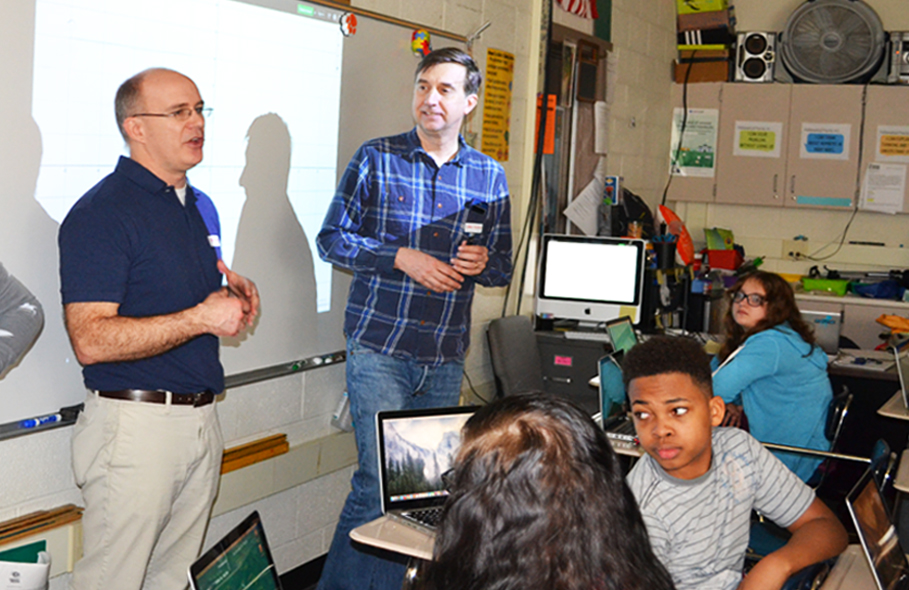Lighting up math education with technology
by the College of Education / Mar 22, 2018

Middle-schoolers create laser lightshow by applying mathematics and design thinking
Curriculum & Instruction instructor Adam Poetzel believes it’s important for preservice teachers studying in the College of Education to be “critical users of educational technology.”
The mathematics teacher was thrilled, therefore, to be a part of a project that demonstrated to eighth-grade algebra students at Urbana Middle School that math mixed with technology can be used in engaging, real-world applications.
Poetzel, working in collaboration with colleagues from the College of Engineering, designed a lesson plan for a laser lightshow program that middle-school students made come to life through mathematical coordinating on graph paper and coding.
“The student engagement level was very high as they had the freedom to create a design of their own choosing, and then use their reasoning skills to figure out the best way to plan the path of the laser using correct coordinates,” Poetzel said. “My favorite quote from one student was, ‘If I had to choose to do this or watch a movie, I would choose this!’”
Poetzel and his collaborators on the project, which included Arend van der Zande, an assistant professor in the College of Engineering, wanted to show the Urbana Middle School students that math is more than rote memorization, and that its applications can be used for real-world functions—such as cool laser lightshows.
A C&I faculty member since 2007, Poetzel taught math for 10 years at Champaign Central High School and has maintained close ties with local schools through grants related to STEM education, which often lead to two-week summer workshops and follow-up learning throughout the schoolyear.
Poetzel said he doesn’t subscribe to the notion that more technology in the classroom automatically translates to increased learning for students. Still, he explores in his curricula whether technology can add value to mathematical learning, benefits that may not have been present without it.
“This added value may be in the form of clear visualizations, real-world applications, immediate feedback, differentiation, engagement, access to advanced ideas, and many other factors,” he said.
Read more about the Urbana Middle School laser lightshow project.